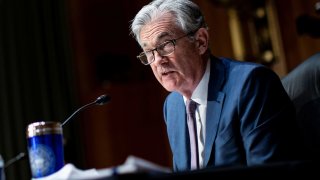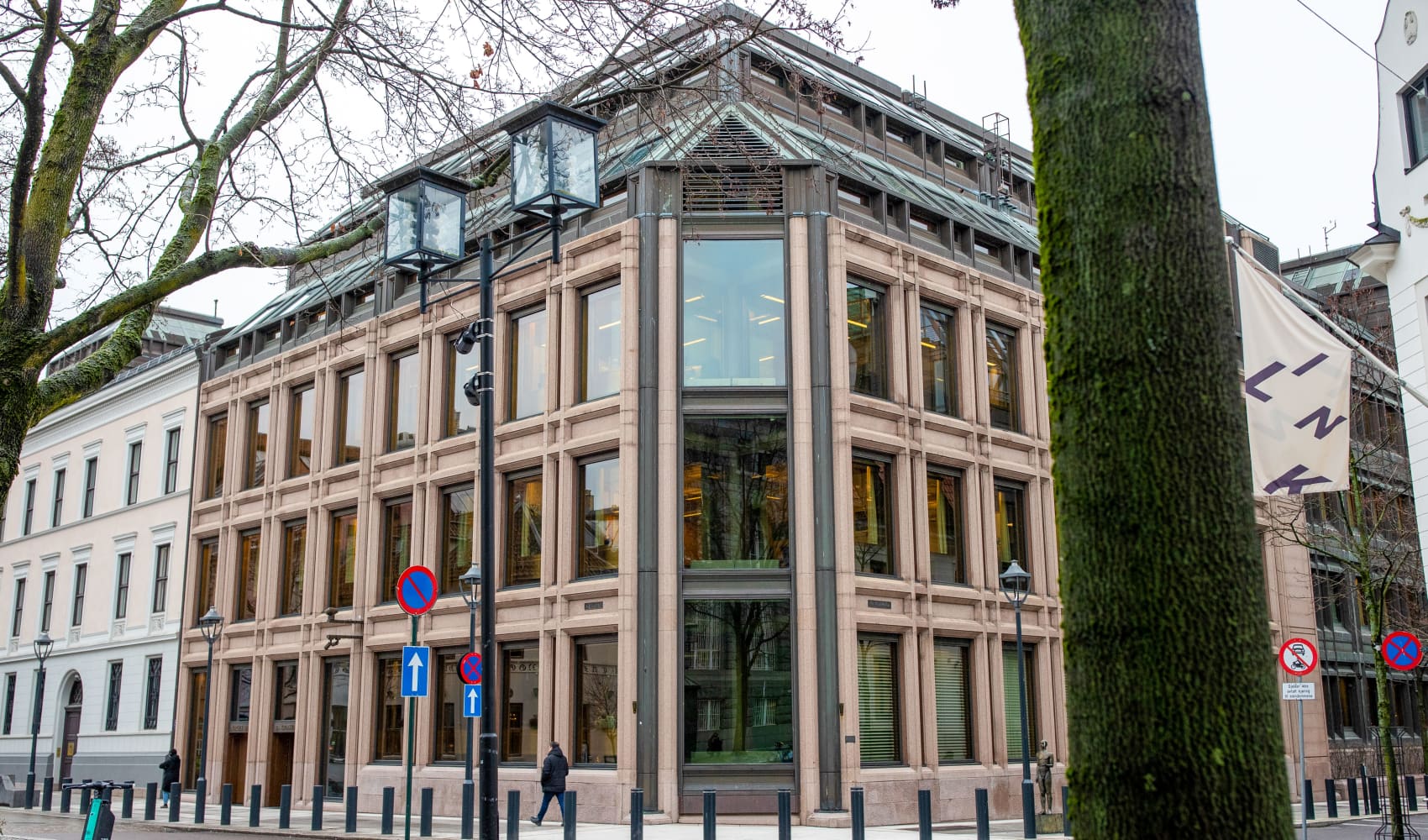
Federal Reserve Chairman Jerome Powell spoke to reporters following the central bank's December policymaking decision.
The Federal Reserve decided on Wednesday to continue to support the economy by buying Treasury bonds. Fed Chairman Jerome Powell discussed the central bank's decision in a press conference.
Powell concludes hour-long press conference
Powell wrapped the press conference just before 3:30 p.m. ET, ending an hour-long discussion that encompassed inflation, bond buying and even Treasury nominee Janet Yellen.
—Thomas Franck
Powell says he spoke with Treasury nominee Yellen to offer congrats
Money Report
Fed Chair Powell said he's spoken to his predecessor, Janet Yellen, to offer his congratulations on her nomination to lead the Treasury department.
President-elect Joe Biden in late November chose Yellen to be his nominee for Treasury secretary. If confirmed by the Senate, Yellen would be the first woman to lead the Treasury department.
Powell, who would work closely with Yellen if she is confirmed, said that they did not discuss policy when they spoke.
—Thomas Franck
Fed chief says it could be a while before higher inflation levels
Answering a question about prices, Powell said empirical evidence shows there are disinflationary pressures across the globe keeping prices in check even with easy monetary policy.
"I think you have to be honest with yourself about inflation these days. There are significant disinflationary pressures around the world. And there have been for a while," he said. "It's not going to be easy to have inflation move up. ... It's going to take some time. It took a long time to get inflation back to 2% in the last crisis."
"We're honest with ourselves and with you in the [Summary of Economic Projections]: But even with the very high level of accommodation that we're providing both through low rates and very high levels of asset purchases, it will take some time," Powell added.
—Thomas Franck
The Fed is 'max dovish' in promising continued support, Evercore strategist says
Evercore ISI strategist Dennis DeBusschere noted that the Fed's current stance is "max dovish," or as accommodative and easy as legally possible.
The strategist said Powell seems to have done a solid job of reassuring markets thus far into the presser.
"Keep in mind, that the Fed is basically max dovish. And all that matters for long rates and the USD is how quickly the U.S. Economy normalizes," DeBusschere wrote in an email. "Powell says the enhanced guidance provided today should ensure that policy remains highly accommodative as the economic recovery progresses."
"The Fed super dovish easy path is set."
—Thomas Franck
Powell says Fed would increase asset purchases if recovery slows
Powell said about eight minutes into the conference that the Fed would increase its balance sheet expansion and overall easy monetary policy if it became clear that the recovery had slowed.
"Our guidance is outcome-based and is tied to progress toward reaching our employment and inflation goals. Thus, if progress toward our goals were to slow, the guidance would convey our intention to increase policy accommodation through a lower expected path of the federal funds rate, and a higher expected path of the balance sheet," Powell said.
"Overall, our interest rate and balance-sheet tools are providing a powerful support for the economy and will continue to do so," he added.
—Thomas Franck
Powell reiterates Fed's promise to aid economy until full recovery
Early in his press conference, Powell said that the Fed would continue to use a variety of monetary tools until officials are confident the U.S. economy is fully recovered.
"Together, these measures will ensure that monetary policy will continue to deliver powerful support to the economy until the recovery is complete," he said.
—Thomas Franck, Yun Li
Powell's press conference begins at 2:30 p.m. ET
Fed Chairman Jerome Powell began his press conference at 2:30 p.m. ET.
The Fed chief is expected to detail the central bank's economic forecast and explain why it is leaving interest rates near zero. He is also expected to discuss the Fed's continued purchases of U.S. debt to support the U.S. economy.
—Thomas Franck
Treasury yields higher after Fed keeps bond buying program unchanged
Investors sold Treasurys after the Fed left its bond buying program unchanged, disappointing some market pros who expected the Fed to shift its buying to longer dated securities. Yields rise when bond prices fall.
The Fed also signaled it would keep very easy policy in place.
There was speculation the Fed could adjust the bond buying program to increase purchases at the 10-year and 30-year duration, which in theory would hold down long end interest rates.
The Fed said it was going to continue to buy at least $80 billion in Treasury securities and $40 billion in mortgage securities until "substantial further progress" is made towards its goals of price stability and full employment.
The 10-year Treasury yield rose to as high as 0.95% from about 0.91% prior to the release of its statement at 2 p.m. ET.
-- Patti Domm
Trading muted on Fed decision with no bond-buying adjustment, strategist says
Peter Boockvar of Bleakley Advisory Group called the Fed update largely a "non-event" for markets because the central bank didn't adjust its bond-buying program like many investors were hoping.
"In what all of us were watching for, the Fed decided to not change the size and composition of its asset purchases, rightly so I believe," he wrote. "That said, they continue on at an extraordinary pace and said the current run rate of $120b is not a limit to what they can eventually do."
—John Melloy
Stocks flat after Fed decision, but U.S. rates rise
Stocks held steady in the minutes immediately following the Fed's December decision, but the rates on U.S. debt rose.
The S&P 500 held near the flatline with a slip of less than 0.1% as losses in utilities and industrials stocks just offset gains in consumer discretionary and tech.
The Dow Jones Industrial Average lost about 100 points, or 0.3%, as Honeywell and Boeing led the blue-chip laggards. The Nasdaq Composite added 0.1%.
The yield on the benchmark 10-year Treasury note was last seen approaching its session high of 0.955%, its highest level since Dec. 9.
—Thomas Franck
Fed pledges to buy bonds until the economy returns to full employment
The Fed on Wednesday said it would support the economy and promised to continue buying Treasury bonds until the U.S. returns to full employment.
It also upgraded its outlook for the broader U.S. economy and held its benchmark interest rates near zero following the conclusion of its two-day meeting.
Central bank leaders said they would continue to buy at least $120 billion of bonds each month "until substantial further progress has been made toward the Committee's maximum employment and price stability goals," the post-meeting statement said.
"These asset purchases help foster smooth market functioning and accommodative financial conditions, thereby supporting the flow of credit to households and businesses," the Federal Open Market Committee added in a statement that gained unanimous approval.
—Thomas Franck, Jeff Cox
Fed may try strike harmony between brighter long-term outlook and reassuring jittery markets
The Federal Reserve on Wednesday is facing the tricky task of both voicing a brighter long-term economic outlook while simultaneously assuring investors of their commitment to expansive monetary policy and near-zero interest rates.
Investors have for weeks debated whether the Fed will extend the duration of its $80 billion Treasury purchases, a shift that would involve the central bank buying more 10-year or 30-year debt. Such a move would help quell longer term rates that impact consumers, such as interest paid on mortgages.
Lowering those longer-term rates would likely pacify jittery investors who worry that Covid-19 and efforts to contain its spread could continue to hamstring output for months and cut into Americans' disposable income.
However, economists more optimistic on a rebound in U.S. activity amid the Covid-19 vaccine rollout say the Fed could opt to simply give out more information on when it would be appropriate to make such changes and delay an actual move.
"Somebody's going to be disappointed," said Ian Lyngen, head of U.S. rates strategy at BMO. "I think it will be a tradeable event in one way or the other."
The Fed will release its statement at 2 p.m. ET, and Fed Chairman Jerome Powell will host a press conference at 2:30 p.m. to answer questions from reporters.
—Thomas Franck, Patti Domm
Fed meeting wraps up as market looks to QE adjustments, economic outlook
The Federal Reserve will update its economic projections and possibly adjust its asset purchase program as it concludes a two-day meeting Wednesday.
Markets don't see the policymaking Federal Open Market Committee raising interest rates for several years, but the Fed could decide to adjust its quantitative easing program to buy bonds with longer durations in an effort to lower long-term interest rates and boost the economy.
Also, the Fed could make its guidance clearer on what it will take to raise rates or begin to taper QE. The post-meeting statement will include projections on GDP, unemployment, inflation and the longer-term trajectory of rates.
One new wrinkle to the summary of economic projections will be "diffusion indexes" that will show the level of uncertainty associated with the forecasts. The charts will show whether members see upside or downside risks to their expectations.
– Jeff Cox






